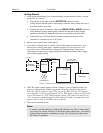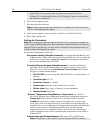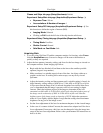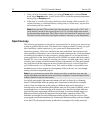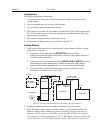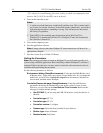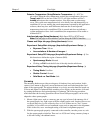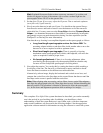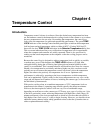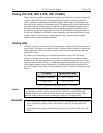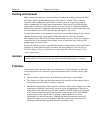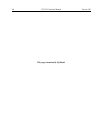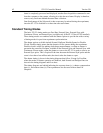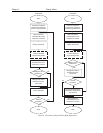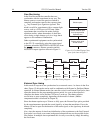
37
Chapter 4
Temperature Control
Introduction
Temperature control is done via software. Once the desired array temperature has been
set, the hardware controls the thermoelectric cooling circuits in the camera so as to reduce
the array temperature to the set value. On reaching that temperature, the control loop
locks to the set temperature for stable and reproducible performance. The green TEMP
LOCK indicator on the Analog/Control module panel lights to indicate that temperature
lock has been reached (temperature stable to within ±0.05°C). If using WinView/32,
there will also be a TEMP LOCK indication in the Detector Temperature dialog box.
This on-screen indication allows easy verification of temperature lock in experiments
where the computer and controller are widely separated. There is also provision for
reading out the actual temperature at the computer so that the cooling progress can be
monitored.
Because the control loop is designed to achieve temperature lock as quickly as possible,
overshoot may occur. If this happens, the TEMP LOCK indicator will light, then
extinguish briefly during the overshoot, then light again and remain lighted as stable
control is re-established. This is normal behavior and should not be a cause for concern.
Should a low temperature be set initially and then a higher one, this overshoot would
probably not occur because the temperature control loop doesn’t drive the temperature
higher, but rather waits passively for temperature rise to occur. Optimum noise
performance is achieved by operating at the lowest temperature at which temperature
lock can be maintained. Typical values for the lowest temperature can vary over a wide
range and will depend on a number of factors, including the camera type, as discussed in
the individual system manuals.
With passive cooling alone, at an ambient temperature of 25°C, temperature lock to a
temperature in the camera’s operating range should typically take about ten minutes.
However, the time required to achieve lock can vary over a considerable range,
depending on such factors as the camera type, CCD array type, type of cooling, etc. Also,
if the lab is particularly warm, achieving temperature lock might take a little longer (30
minutes maximum), or the lowest temperature at which lock can be achieved could be a
little higher. Once lock occurs, it’s okay to begin focusing. However, you should wait an
additional twenty minutes before taking quantitative data so that the system has time to
achieve optimum thermal stability.



